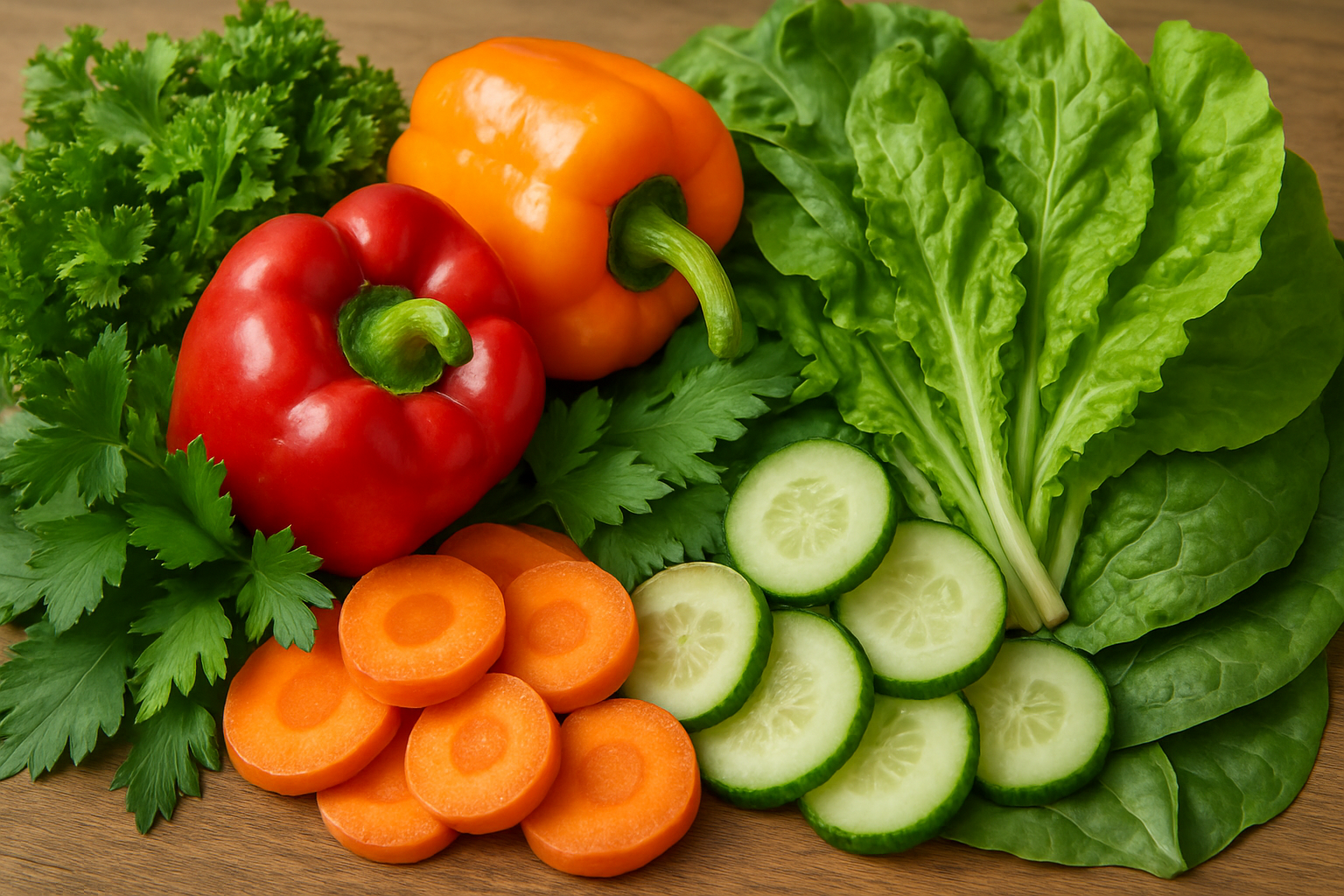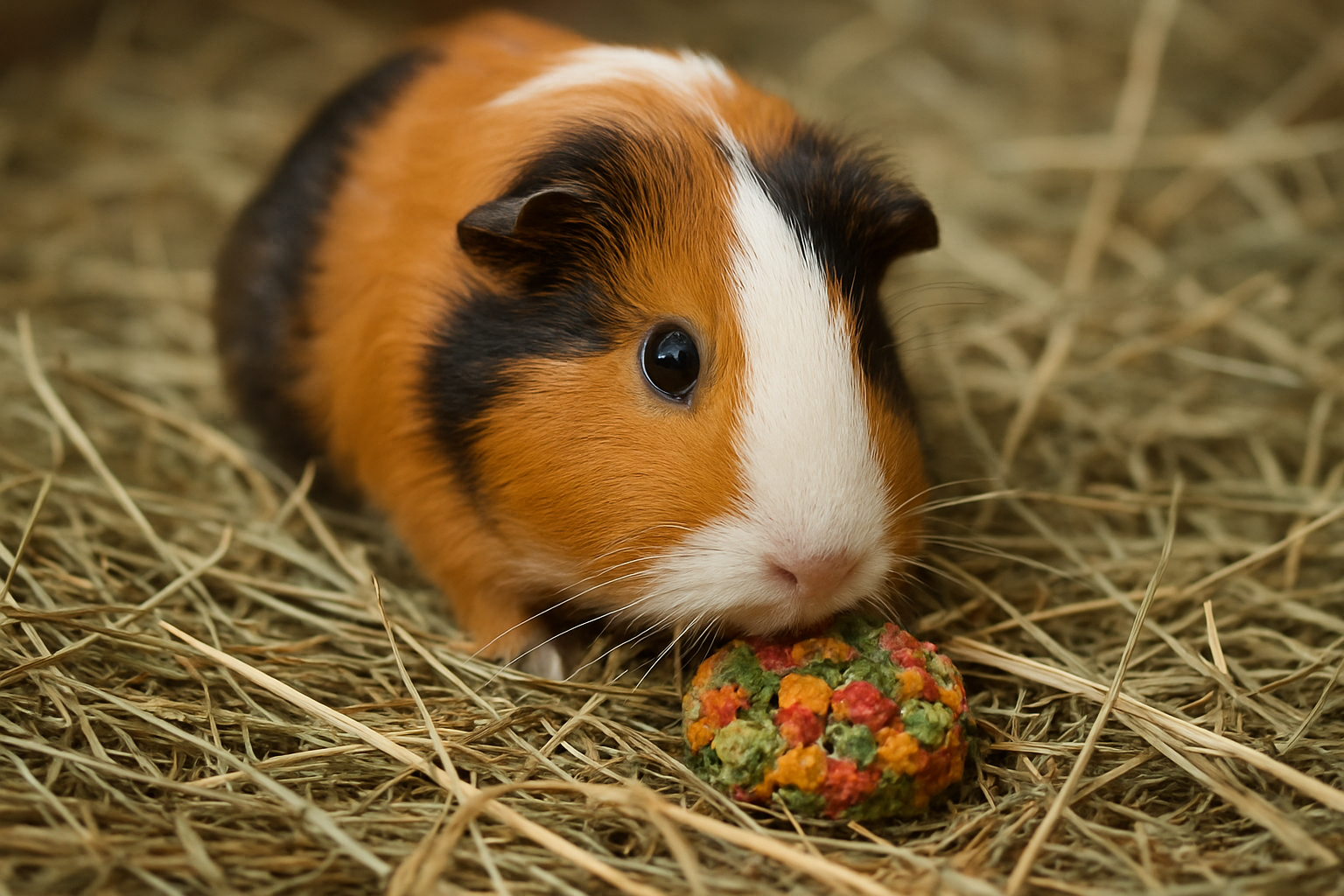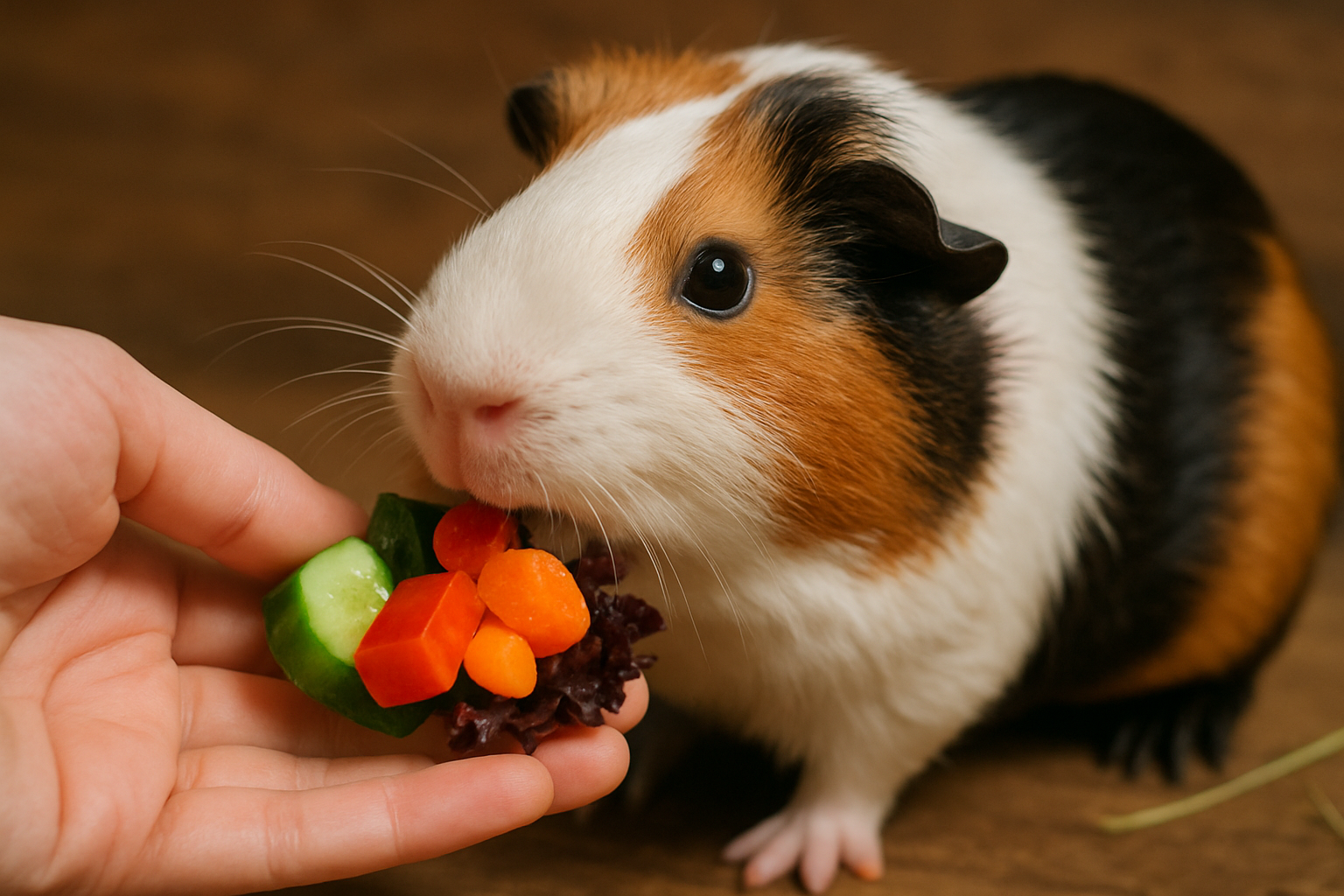Guinea pig treats are a beloved way to spoil your furry friend with something tasty and special.
But what are the safest and healthiest options to give your pet?
Here’s a complete guide to guinea pig treats you can trust.
Some are crunchy and help wear down teeth.
Some are rich in vitamin C to prevent scurvy.
Some promote mental stimulation and natural foraging habits.
Some are easy to make at home with simple ingredients.
Some provide hydration and warmth relief during hot days.
Let’s dive right in.
Why Are Guinea Pig Treats Important?
Treats might sound like just a snack, but for guinea pigs, they play several vital roles beyond enjoyment.
First, treats can add important vitamin C to their diet, which guinea pigs cannot produce on their own. This essential nutrient helps prevent scurvy, a disease that causes weak immunity, growth problems, and dental issues.
Providing a mix of fresh veggies and special treats helps balance their nutrition while adding variety.
Moreover, treats that encourage chewing help wear down their continuously growing teeth, reducing dental problems.
Finally, interactive treats stimulate mental engagement, preventing boredom and promoting natural foraging instincts.
Without treats, guinea pigs may become less motivated to eat their necessary hay or pellets, or even develop health issues from nutritional imbalance.
Important tip: Treats should only make up about 10% of your guinea pig’s diet to maintain digestive health and prevent obesity.[Source]
[h2 id="how-to-choose-safe-and-nutritious-guinea-pig-treats"]How to Choose Safe and Nutritious Guinea Pig Treats?Selecting the right treats is key to keeping your guinea pig healthy and happy. Many commercial treats are loaded with artificial sweeteners and empty calories, which don't support your pet's well-being.
The best treats are natural, vitamin C-rich, low in sugar, and support healthy digestion and teeth.
Here are some criteria to consider:
- Vitamin C content: Guinea pigs cannot produce vitamin C. Treats like bell peppers, broccoli, and oranges provide this essential nutrient naturally.
- Low sugar & oxalates: Excess sugar can cause obesity and dental issues. Foods high in oxalates like spinach, parsley, and strawberries need to be limited because they may contribute to bladder stones.
- High fiber: Treats that include hay or fibrous veggies help digestion and keep teeth worn down.
- Freshness: Uneaten produce should be removed promptly to avoid spoilage, which can cause digestive upset.
- No artificial additives: Avoid treats with added sugars, preservatives, or artificial colors.
- Size & texture: Use treats your guinea pig can safely chew without choking risk. Crunchy treats are great for dental health.
- Variety: Rotate treats to provide a broad spectrum of nutrients and keep your piggy interested.
Remember to observe your guinea pig’s reaction to new treats and introduce unfamiliar foods gradually to prevent diarrhea or gas.[Source] [Source]

What Are the Best Homemade Guinea Pig Treat Recipes?
One of the best ways to ensure your guinea pig is getting healthy treats is to make them yourself. Homemade guinea pig treats let you control every ingredient and avoid preservatives and additives common in store-bought varieties.
Here are some easy, nutritious recipes:
1. Crunchy Hay-Based Biscuits
These biscuits combine vitamin-rich veggies with hay to encourage chewing and support dental health.
- 1 cup fresh hay, finely chopped
- 1/2 cup grated carrot
- 1/2 cup grated zucchini
- 2 tablespoons whole wheat flour (optional)
- Water to bind
Mix all ingredients, form small discs, and bake at 300°F for about 1 hour until crisp. Cool before serving. Store in an airtight container up to a week.[Source]
2. Vitamin C Fruity Balls
These nutritious balls mix pellets and fresh fruit for a bite-sized treat.
- 1/2 cup crushed vitamin C-fortified pellets
- 1/4 cup mashed banana or grated apple
- 1 tablespoon wheat germ (optional)
- Blueberries for decoration
Mix pellets, fruit, and wheat germ. Roll into small balls, embed a blueberry inside each. Refrigerate an hour before serving. Store for up to 3 days.[Source]
3. Stuffed Hay Tube Foraging Treat
Repurpose an empty toilet paper roll by stuffing it with hay, crushed pellets, and herbs like parsley or cilantro. This mimics natural foraging behavior and enriches your guinea pig’s day.[Source]
4. Veggie Kebabs
Thread pieces of safe veggies such as cucumber, bell pepper, carrot, and tomato onto a small wooden skewer. Hang the skewer in the cage to provide a fun, healthy snack.
Remove uneaten portions in a few hours to prevent spoilage.[Source]
These homemade options are low-cost, customizable, and a great bonding experience for guinea pig owners.
Want to know a surprising favorite treat that aids digestion and is easy to store?
Can I Give Fruits? And What About Vegetables?
Fruits can be delicious treats but come with a catch: they contain higher sugar levels, so they must be given sparingly—usually once or twice a week, in tiny portions.
Strawberries, kiwi, oranges, and apples (without seeds or core) are excellent vitamin C-rich fruits guinea pigs enjoy. Blueberries and melon are also good options.
Fresh vegetables are a safer daily treat providing fiber, vitamins, and hydration. Leafy greens such as romaine lettuce, red or green leaf lettuce, mustard greens, and kale form the bulk of your guinea pig's fresh produce.
Bell peppers (especially red and yellow), broccoli, and cilantro are great vitamin C sources. Carrots and sweet potatoes can be given once or twice a week, but too much can lead to excess sugar intake.
Important: Some greens like spinach, parsley, and strawberries are high in calcium oxalates, which may contribute to bladder stone formation in susceptible pets. Limit these for guinea pigs prone to urinary issues.[Source]
Remember to introduce any new fruit or veggie slowly to avoid digestive upset. If your guinea pig develops diarrhea, reduce the amount or remove the new treat temporarily.
[h2 id="how-to-balance-treats-in-your-guinea-pigs-diet"]How to Balance Treats in Your Guinea Pig’s Diet?Guinea pigs thrive on a diet where hay is the star, ideally 80% of their daily intake. Pellets fortified with vitamin C make up around 1/8 cup per day, and fresh vegetables about 1/2 to 1 cup daily.
Treats should be just a small portion, mainly used for enrichment, bonding, or dietary variety.
Giving too many treats—especially sugary fruits or commercial snacks—can unbalance your pig’s diet, cause soft stools, obesity, or dental issues.
Fresh hay aids digestion and helps control tooth growth, so always keep hay unlimited and fresh.
Offer treats in moderation, observe your guinea pig’s preferences, and avoid uneaten leftovers to prevent spoilage.
Replace pellets daily to ensure freshness and vitamin C intake.[Source]
Quick tip: To encourage natural foraging, hide treats around the cage instead of serving in one bowl. This promotes mental stimulation and exercise.

What Commercial Guinea Pig Treats Are Safe?
Most commercial treats contain unnecessary sugars or additives, making them less ideal nutritionally. Many pet owners find homemade treats more transparent and healthful.
However, some brands produce vet-formulated, vitamin C-fortified pellets or hay-based cookies that support health and tooth wear.
Look for treats without seeds, nuts, or dried fruits and steer clear of high-fructose corn syrup or artificial sweeteners.
Popular commercial snacks like Burgess' Herby Hearts, Meadow Munchies, and Hay Bars are created by experts to keep guinea pigs happy and prevent boredom without compromising health.[Source]
When using commercial treats, always offer in limited portions and watch your guinea pig’s reaction.
How Can I Make Treat Time Safe and Fun?
Beyond nutritional considerations, treats are bonding and enrichment tools. Here are tips to maximize treat time:
- Use shallow ceramic bowls: These are sturdy, chew-proof, and reduce spillage.
- Hide treats in tubes or foraging mats: Stuffed hay tubes or hay mats encourage natural behavior and mental engagement.
- Hand-feed occasionally: Your guinea pig will often "wheek" for their favorite treat and enjoy hand interaction to build trust.
- Avoid mixing bedding in food bowls: Keep food clean by placing bowls away from bathroom areas and spot-cleaning daily.
- Introduce new treats gradually: Watch for signs of digestive distress.
- Keep fresh water available: Proper hydration supports digestion and urinary health.
If your guinea pig is picky or has health issues, your veterinarian may recommend vitamin C supplements in drops or tablets, but avoid water additives due to quick degradation.[Source]

What Are the Pitfalls to Avoid When Giving Guinea Pig Treats?
Even with the best intentions, some common mistakes can harm your guinea pig’s health:
- Overfeeding treats: Too many sugary or starchy treats can cause weight gain and digestive upset.
- Neglecting hay: When treats replace hay, dental and gut problems can develop.
- Ignoring portion control: Pellets should be limited to about 1/8 cup and veggies to about a cup daily per pig.
- Feeding unsafe foods: Avoid iceberg lettuce, onions, garlic, chocolate, seeds, nuts, and dairy products.
- Contaminated food: Remove uneaten fresh foods within a couple of hours to prevent spoilage.
- Using plastic bowls: Plastic can harbor bacteria and be chewed, risking ingestion.
Always consult your veterinarian if you’re unsure about new treats or if your guinea pig has specific health issues.[Source]
How Do I Introduce New Treats to My Guinea Pig?
Introducing new guinea pig treats should be a slow, careful process to monitor tolerance and reactions:
- Start with very small portions, about a teaspoon-sized amount.
- Offer the same treat once daily for 3-5 days and watch for normal stool and appetite.
- If no adverse effects occur, gradually increase portion size.
- Vary treats to provide diverse nutrition and prevent monotony.
- Discontinue any treat that causes diarrhea, bloating, or reduced appetite.
Keep a food journal to track what your guinea pig enjoys and any reactions. Personalized care is key to their wellbeing.
What Are Some Expert-Recommended Guinea Pig Treats?
Experts recommend these treats to keep guinea pigs healthy and pampered:
- Timothy hay cubes or compressed hay treats: Promote chewing and provide fiber.
- Vitamin C-fortified pellets: Essential daily nutritional boost.
- Fresh greens: Romaine lettuce, kale, mustard greens, and cilantro.
- Bell peppers: Sweet and rich in vitamin C.
- Carrots and sweet potato slices: Occasional crunchy treats.
- Blueberries, strawberries, and kiwi pieces: As tiny fruit treats.
- Hay-based cookies or snacks: Maintain dental health while providing flavor variety.
To keep dental health in check, these snacks encourage chewing, which is vital since guinea pig teeth grow continuously.[Source]
Can Guinea Pig Treats Make a Difference in Health and Behavior?
Absolutely. Treats serve as more than just nourishment. They can enhance mental sharpness and reduce stress by mimicking natural foraging, which is critical for their wellbeing.
Ignoring treats or giving them incorrectly can lead to health issues and behavioral problems like boredom or fussiness with food.
Healthy treat-time routines strengthen your bond and enrich your pet’s environment.
Remember: Never rush treat introduction or rely solely on treats for nutrition. Instead, use them as part of a balanced feeding plan with hay, pellets, and fresh vegetables.[Source]
Frequently Asked Questions About Guinea Pig Treats
What fruits are safe for guinea pigs as treats?
Safe fruits include small amounts of strawberries, blueberries, kiwi, orange, apple (without seeds), banana, melon, and mango. These should be given sparingly due to sugar content.
Can I give my guinea pig carrot tops or leaves?
Yes, carrot tops are safe and nutritious in moderation. They provide fiber and vitamins but should not replace staple diet components.
How often can I give commercial guinea pig treats?
Commercial treats should be offered occasionally and should not replace fresh vegetables and hay, ideally less than 10% of the diet.
Are there treats that support dental health?
Yes, crunchy hay-based treats and high-fiber pellets encourage chewing and naturally wear down teeth, preventing overgrowth.
Can treats cause digestive issues?
Yes, overfeeding sugary or rich treats may cause diarrhea or bloat. Gradual introduction and moderate portions reduce this risk.
Are vitamin C supplements necessary if I give vitamin C-rich treats?
Not usually. A diet with pellets fortified with vitamin C, hay, and fresh veggies provides adequate vitamin C. Consult a vet for exceptions.
Is it okay to feed guinea pigs commercial fruit snacks?
Generally no. These often contain added sugars and preservatives. Fresh fruits are a superior choice.
What's Your Next Step?
Tell us in the comments: How will you apply this to your guinea pig treats? For personalized advice, contact us!
For more insights on small animal care, check out how to maintain the best small animal cage and the ultimate guide to dog food and nutrition for pet health tips.
Want to spoil your guinea pig with the best treats ever? Try these healthy recipes and tips and watch them thrive with plenty of joy and vitality!




